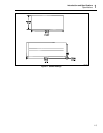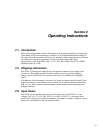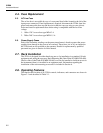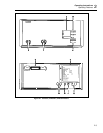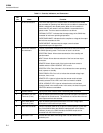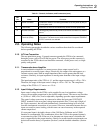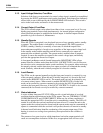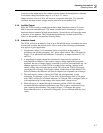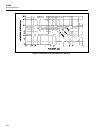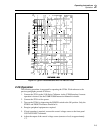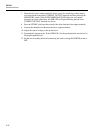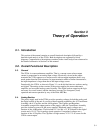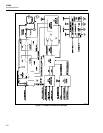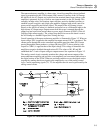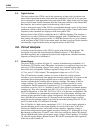
Operating Instructions
Operating Notes
2
2-7
connected to the output before the condition can be cleared. Overcompliance is detected
as an output voltage outside the range of +4 V dc or 3 V rms ac.
Output current in excess of 20 A will cause an overcurrent indication. To correct the
condition, the input control voltage must be reduced to an acceptable level.
2-18. Audible Output
When the 5220A is used to output high current at high frequencies (above 10 A and 1
kHz) it may emit an audible tone. The sound is normal and is characteristic of power
transistors that are operated at high current density. Several factors will cause the sound
to be more or less apparent. They include background noise, location of the 5220A
relative to the operator, and operator’s hearing ability.
2-19. Inductive Loads
The 5220A will drive an inductive load of up to 200 µH. However, reasonable care must
be exercised to ensure the desired results. One or more of the following considerations
may apply to a given application:
1. Compliance voltage (3.0 V maximum) places a restriction on the product of
inductance and operating frequency for a given output current. This is illustrated in
Figure 2-2 for maximum load inductance vs frequency at output currents of 5, 10,
and 20 A.
2. A step change in output current into an inductive load can easily produce an
overcompliance condition. If the control voltage is being input at the front panel
terminals, the rate of change must be controlled to avoid an overcompliance trip. An
alternate approach is to set the 5220A to standby before making a change in the
control voltage, then select the operate mode. This allows the 5220A to internally
control the rate of change. If the control voltage is taken from a Fluke Model 5100
Series Calibrator, the calibrator will limit its output to an acceptable rate of change.
3. The leads used to connect a load to the 5220A can add appreciably to load
inductance. For example, a pair of 5-foot leads (10 feet of wire) made of 18 gauge
wire (AWG) will have a calculated inductance of 3.86 µH. This is enough to cause an
overcompliance trip if a step change in the input control voltage occurs.
4. When driving an ac current through an inductive load the 5220A will exhibit
increased distortion and transconductance error. This is due to a reduction in loop
gain caused by the inductance. The graph in Figure 2-3 illustrates the typical
transconductance error, as a function of frequency, for two different inductive load
values.



